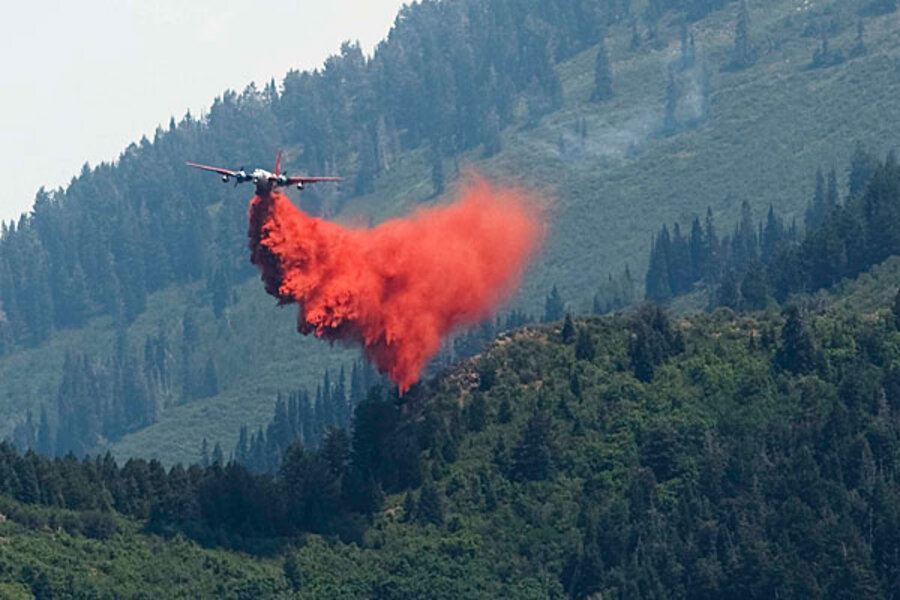Colorado 'megafire' highlights rise of longer, bigger, fiercer blazes
Loading...
| Los Angeles
The worst has passed in Colorado, which recently faced the most destructive in wildfires in state history, but this is only a pause, according to the National Inter-Agency Fire Center (NIFC) in Boise, Idaho.
Federal agencies in charge of fighting fires are turning their attention to the more northern states of Montana, Idaho, and Nevada in anticipation of new blazes amid a fire season that is highlighting the rise of "megafires" in America.
A mix of natural and manmade forces are driving an increase in the number of fires that "are burning longer and are more destructive and difficult to manage,” says Don Smurthwaite, an NIFC spokesman.
Climate change has left vast swathes of land tinder-dry, controlled burns to manage undergrowth have been discontinued, and more homes are being built in previously wildland areas. The result: “Over the past ten or 15 years, we have more megafires than in the past,” says Mr. Smurthwaite.
The factors leading to more megafires are unlikely to change unless addressed, leading to a sense of urgency with in the firefighting community.
“We need to act now to change what is happening,” says Richard Ottinger, dean emeritus of Pace University Law School in White Plains, N.Y. and co-founder of its environmental law program. “We should not get used to this.”
Colorado, for example, has had very significant fires in September through February, notes Chris White, co-founder of Anchor Point, a fire-management consultancy in Boulder, Colo., via e-mail. Until recently, this was considered the “off season.”
"The fire season for many areas of the country is getting longer, even year round,” he says.
Clearly, an issue such as climate change would require international action in addition to individuals changing their energy-use patterns. But without progress, extreme weather could increasingly be seen as the "new normal," says Franz Litz, executive director of Pace Law School’s Energy and Climate Center.
“Wildfires are a consequence of extreme weather – in this case drought," he says. "The frequency of extreme weather events is increasing as global average temperatures increase and our climates change.”
Moreover, land ownership is becoming more fragmented and harder to manage, says Mark Finney, a research forester at Missoula Fire Sciences Laboratory in Montana.
“Mostly, it means that people resist land management actions [like controlled burns] on their own land and on neighboring private lands because they moved there for aesthetic reasons,” he says.
Efforts to address this problem at least somewhat have also faltered. One program instituted by President George W. Bush intended to have loggers pay to loggers remove excessive woody tree growth, which acts as fuel for forest fires. But the materials had "little to no marketplace value" and the program has faltered, says Steven Apfelbaum, founder of Applied Ecological Services, Inc., a restoration ecology firm in Brodhead, Wis.
A plethora of research and mapping of fire risk has been done, he adds, and there are also “great training programs for firefighters to learn about the difference between smaller and mega fires.”
But he adds: “Most of the learning is based on book knowledge as so few fire fighters have fought megafires.”





